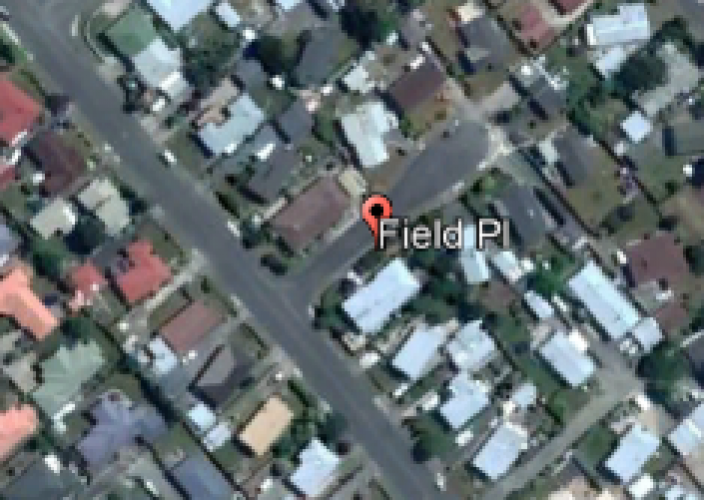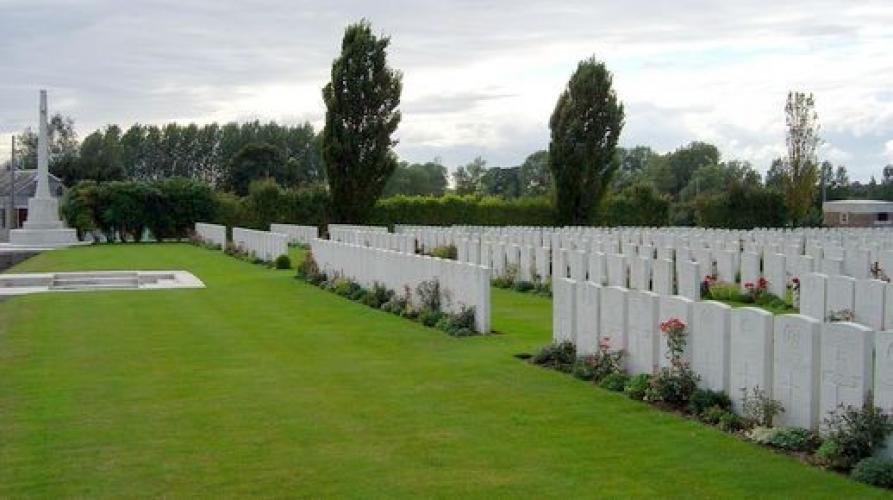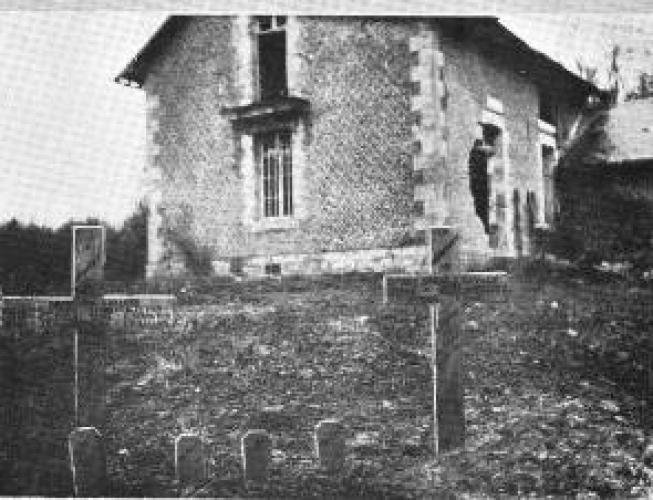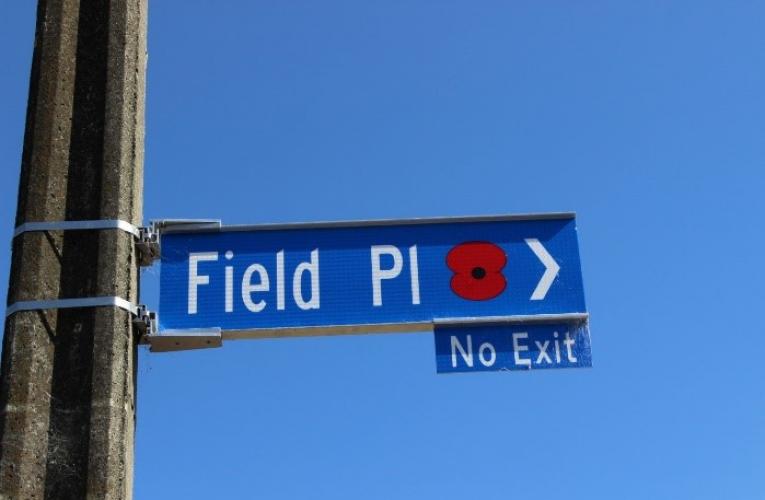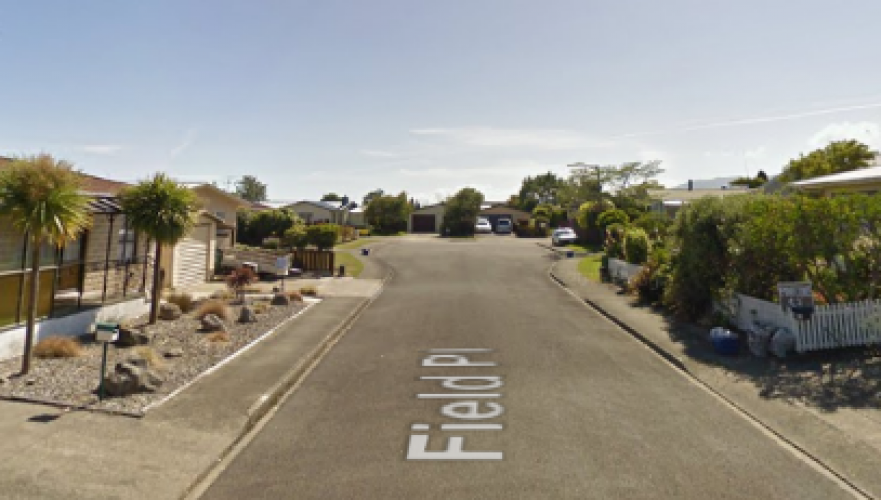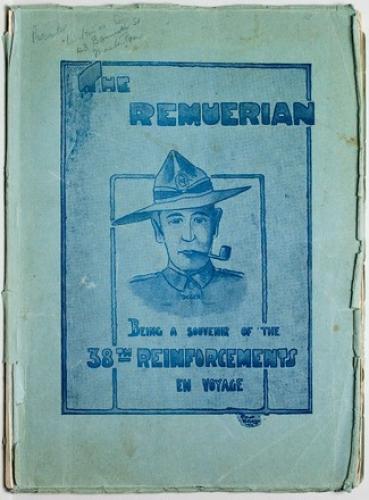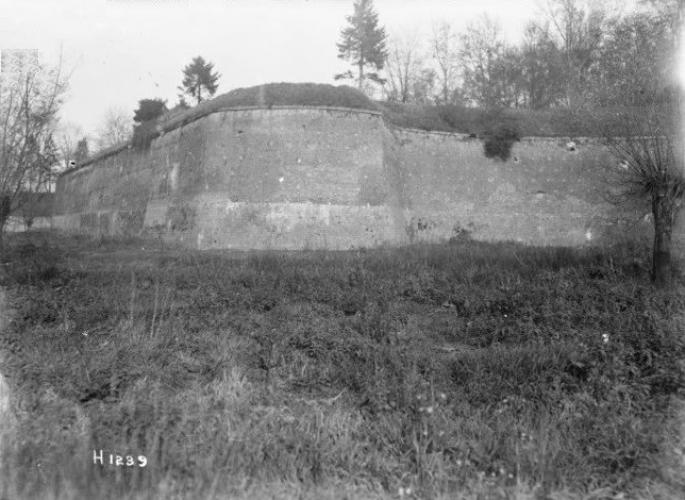240 Field Place Richmond, street scene 2018
Reason for the name
This street in Richmond is named in honour of Thomas Lucas Field who lost his life in World War 1 on 5 November 1918 just six days before the Armistice was signed ending hostilities “and the guns fell silent”.
Fallen servicemen have been remembered across Tasman district in various ways including the naming of streets and buildings, the planting of trees and the installation of monuments. In conjunction with the 100-year anniversary of the signing of the armistice that ended the fighting between Germany and the Allies during World War I, Tasman District Council installed new street signs acknowledging the service of fallen soldiers from Richmond. The move comes after the Richmond Waimea RSA asked the council to take part in the Poppy Places project by adding poppies to street signs named after fallen soldiers.
Richmond Waimea RSA president Ross Norgate and Tasman District Council’s Megan Bell managed the project. Tasman mayor Richard Kempthorne said the council was proud to be part of the project
Author: The Poppy Places Trust
Thomas Field was born on 20 December 1876 in Timaru, Canterbury. He was the son of George E. and Bessie Annie Field, of 219 Featherston Street, Palmerston North. Before enlistment Thomas was an Orchardist. Where he was working is not recorded.
73576 Private Thomas Field joined the 2nd Battalion of the Otago Infantry Regiment of the New Zealand Army during World War 1, 1914-1918 and embarked for the front on 05 Jun 1918 arriving 31 July 1918 at Liverpool, Merseyside. Thomas travelled on HMNZT 105, the Vessel was named Remuera. He embarked as a Private soldier, 38th Reinforcements, D Company New Zealand Expeditionary Force.
It should be noted that Thomas went to Europe at a late stage in the war and he was certainly old to be a Private soldier at 42 years. Little is recorded on Thomas’s training in NZ or the UK prior to his arriving in France. It should be noted that Thomas was only in Europe for three months before he was killed in action and only 6 days before the war ended.
Thomas Died 5 November 1918 at Le Quesnoy, France. The Capture of Le Quesnoy was an engagement of the First World War that took place on 4 November 1918 as part of the Battle of the Sambre. Elements of the New Zealand Division scaled the fortified walls of the French town of Le Quesnoy and captured it from the defending German garrison
beginning at 5:30 am, the New Zealand Rifle Brigade advanced from its starting positions east of the town, aiming to surround it and link up on the far side. By late morning, the linkup had been achieved and other elements of the New Zealand Division moved further west into the Mormal Forest, leaving the Rifle Brigade to capture the town itself. After mopping up outlying outposts, the New Zealanders moved up to the ramparts of the town, but were held back by machine-gun fire. Late in the afternoon, a scouting party located an unguarded section of the walls and the brigade's 4th Battalion managed to climb the ramparts and move into the town, quickly seizing it. The capture of Le Quesnoy was the last major engagement of the war for the New Zealanders.
From the official history of the Otago Regiment it relates the events of 5 Nov: “During the night the 42nd Division relieved the New Zealand Division in the line. The two Battalions of the Regiment thereupon commenced their long trek back through the Forest towards Le Quesnoy. The 1st Battalion completed an unbroken march to billets in the citadel town, a distance of about nine miles; the 2nd Battalion halted at Maison Rouge, and at 9 a.m. on the 6th resumed its journey to Le Quessnoy.
The casualties sustained by the 2nd Battalion of the Regiment on the 5th included two officers and nine other ranks killed, all of them during the earlier stages of the advance. They were among the last New Zealanders to fall in action on the Western Front; on the following day, November 6th, their bodies were reverently laid to rest alongside Forester's House, in the shade and silence of the forest.
Thomas is buried at Cross Roads Cemetery, Fontaine-au-Bois, Nord, France II. A. 6.
Cross Roads Cemetery was begun in the first week of November, 1918, by the 1/1st Northumbrian Field Ambulance; and at the Armistice it contained the graves of 61 soldiers from the United Kingdom. It was then enlarged by the concentration of graves from the battlefields between the Escaut and the Sambre, and from certain other cemeteries, including:-
- Bavay German cemetery on the South side of the road to Feignies, in which eleven soldiers from the United Kingdom and two from New Zealand were buried in the latter half of 1918. The German graves were removed to Frasnoy German Cemetery.
- Villereau Churchyard in which two soldiers from New Zealand and one from the United Kingdom were buried in November, 1918.
With four exceptions, every man buried in this cemetery fell between the 1st October, 1918 and the Armistice. There are now nearly 750, 1914-18 war casualties commemorated in this site. Of these, over 100 are unidentified and special memorials are erected to one soldier from the United Kingdom and one from New Zealand, believed to be buried among them. Other special memorials record the names of nineteen soldiers from the United Kingdom, one from New Zealand and one from South Africa, buried elsewhere whose graves could not be found.
The cemetery covers an area of 2,512 square metres and is enclosed by a red brick wall on three sides. The cemetery was designed by Charles Henry Holden & William Harrison Cowlishaw. Casualty Details: UK 651, Australia 1, New Zealand 89, South Africa 2, Total Burials: 743. Thomas is also on the memorials at Mapua, Richmond and Tasman in New Zealand.


